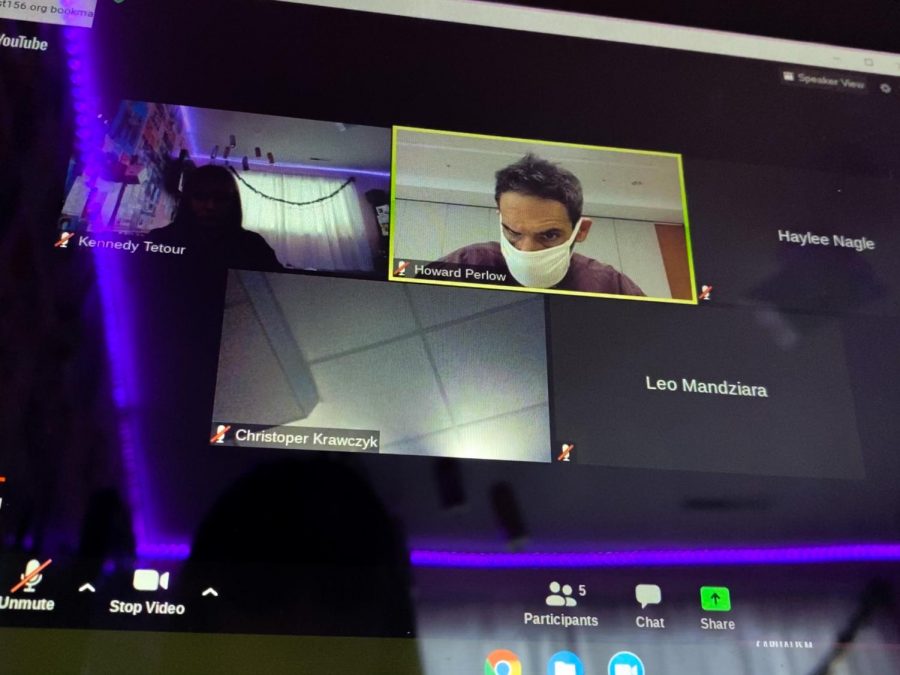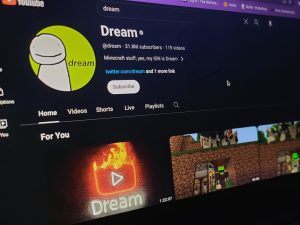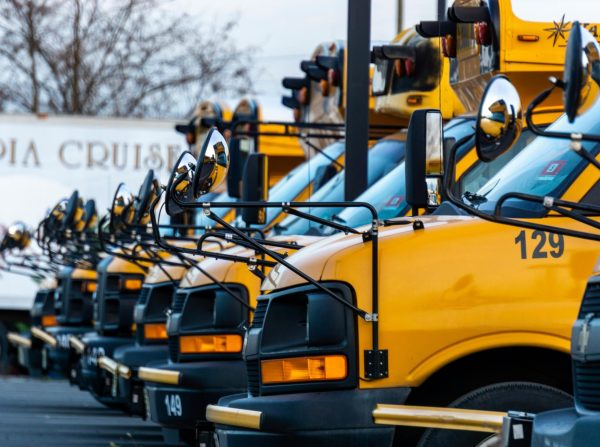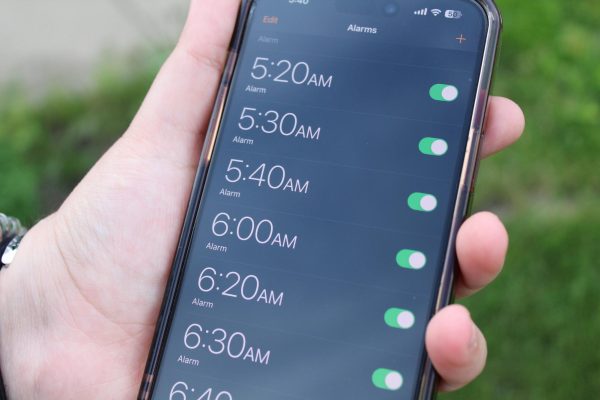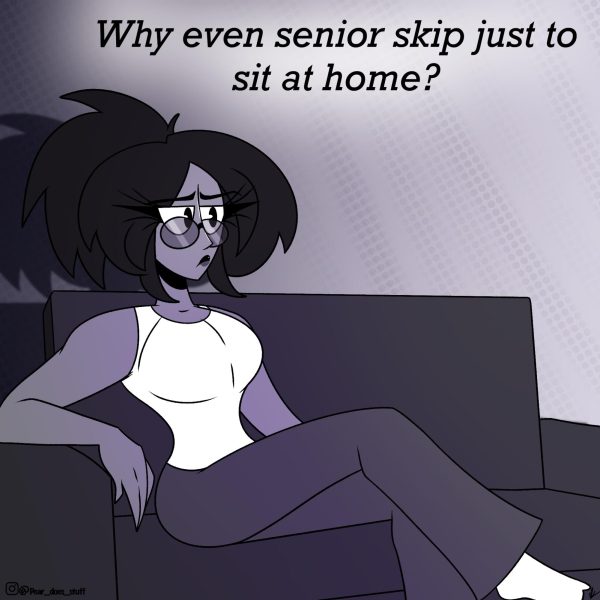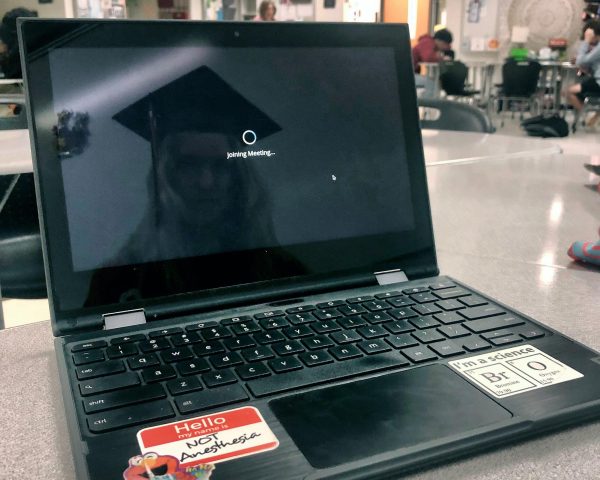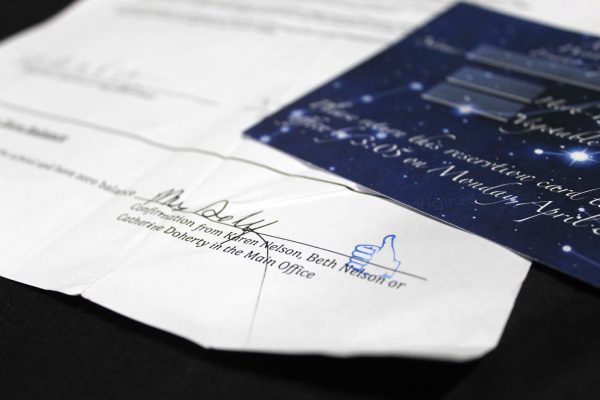Opinion: Don’t forget remote students
As MCHS heads into its second semester, students learning remotely are finding themselves in a peculiar —and difficult — spot
The mix of remote and hybrid learning models has created new challenges for students who are still stuck at home.
February 5, 2021
A senior wakes up for their school day, tired but hopeful. While they never expected they´d be completing out their school days remotely, or even during a pandemic, they have unfortunately found themselves in that very situation. Still, they´re determined to be positive, and make the best of what they´ve been given. The student opens their Chromebook, the soft glow of the screen illuminating their faces. They open schoology, and navigate their way into their first period´s Zoom meeting. Waiting to be let in, they text some friends.
“Hey, I meant to ask, are you all going to school or staying home?” the student asks.
“I´m staying home, it’s not worth it.” one friend replies.
“Are you kidding? I took the first ticket out of there. I´m sitting near the entrance right now.” another states.
“Same. I´d like to experience at least some of my senior year.” another friend says.
From the computer, a bell dings, and the student’s attention is brought to the whiteboard the camera is focused on. They can hear quiet chatter and laughter, but they have no way of figuring out who or what has brought it. They are the only one in the Zoom. A long class period passes with almost no interaction.
Well, that was awful, they think to themselves. Please don´t tell me that´s how the entire day will be. They move onto their next class. As they are let into the Zoom, they see that their teacher has set-up two separate cameras on both themselves and the class. As the student gazes at who is all in the classroom, they notice that they can see themselves projected onto the wall of the room. They move their hand to wave, and people wave back.
Students were given the choice as to whether they would come to school twice a week, or stay home the entire time for school. Teachers were tasked with having to teach both in-person and online students, and keep themselves safe and sane at the same time. As much as the school tried to prepare both students, parents, and staff, everyone was waiting to see how the first day back in the new hybrid situation would play out. Because of all the uncertainty, it seems that no one knew how best to approach the situation of handling it. As a result, there was a great lack of uniformity among how online students were being taught. And while this is no fault of the teachers, it is an issue that has caused both alienation and unneccessary stress for students.
Although second semester has not gone on for long, it is apparent to remote students what does and does not work in terms of their remote learning experience.
Firstly, students should be able to have a view of their classmates, and their classmates should be able to have a view of them. In real life, a teacher is not able to control the view a student is taking of the classroom and everything happening in it. So, the same rule of thought should be applied to remote students. Quarantine is already isolating enough, and those who have had to stay home and stay diligent are even more at risk of loneliness, depression, and feeling isolated. School is a social place, and students should not have to skip out on that aspect just because they are learning from home. Any extra supplies or costs it may take to ensure this should be seen as a necessary evil needed to ensure the well-being of all students.
Second, teachers should pay equal attention to both remote students and in-person students as best they can. It is apparent when in-person students are being prioritized over their remote counterparts, and this should be minimized as much as it can be. Simply observing teachers and in-person students without the ability to engage is awkward, and makes the situation worse. Teachers should interact and give eye-contact with all students so that all students are able to be involved and engaged.
Third, students should be able to both see and hear the lesson occurring. If an experiment is happening, remote students should be able to view it. If something is being written on the whiteboard, all students should be able to write it down. If the teacher is going off on a tangent on a specific subject or even just giving directions, remote students should be able to listen in. An accurate view and auditory experience needs to be accessible for every student so that no one is left behind in terms of the class´s material.
This advice is not where the support for remote students should end. Teachers should be having honest conversations with their students as well as their colleagues about what works and does not work, and how they can better support all of their students. Although there may be differing opinions, it is important that students who are not physically there with their fellow peers and teachers still have the opportunity to feel heard, and in-person students have the chance to connect with their remote peers.
Everyone is doing the best that they can to adjust and get through this difficult time. However, this does not mean that we can allow certain students to be left behind in the dust of such a tumultuous time. Students and teachers are separated by a screen, and this can make it hard to connect and understand what the other is going through. Having honest conversations about the situations we’re in and how we can make them better will make a world of difference for both students and staff alike.
February 2, 2021 update; This article has been edited to include both the visual and auditory needs of students.



